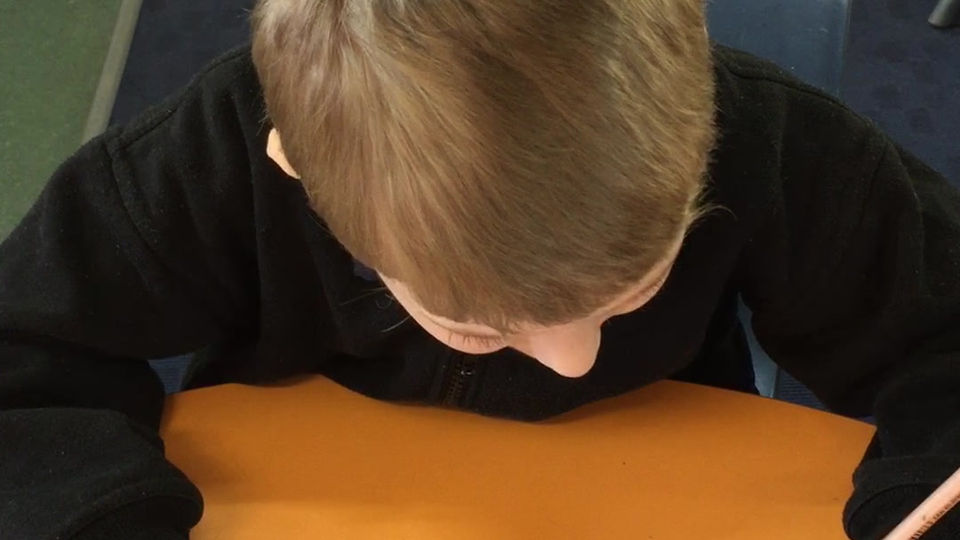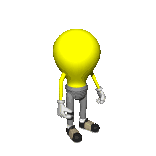
The Reading Hut®
"On a mission to inspire every child to read, learn, and find joy in words. We publish One, Two, Three and Away! series. New Online Library Reading early and for pleasure!"


The Early Dyslexia Screening Centre uses Monster Mapped® words and books to give dyslexic learners the complete information they need to see how letters and sounds connect. Monster Mapped® Words make the full code visible the moment a child reads, offering the explicit clarity that at least one in four children miss in synthetic phonics programmes.


Embracing Word Mapping: Connecting Speech Sounds, Spelling, and Meaning by Focusing on Phonemic Awareness and Making the Whole Code Visible. We are Monster Mapping Words!
We are on a mission to map words with children, making 'Speech Sound Mapping' our daily focus!
It is not only the children who become increasingly conscious of the mapping of words; you will too!
According to the Department for Education (DfE) 2018, one in four children start school with poor phonemic awareness, and one in three face speech difficulties (Speech and Language UK). Poor phonemic awareness is the leading cause of reading difficulties. Therefore, identifying children who do not have phonemic awareness is essential. Those with an Ortho-Graphix® mindset create daily - meaningful- opportunities for children to develop this phonemic awareness and understand how to use it!
Phonemic awareness relates to the ability to isolate, segment, blend, and manipulate sounds and is only used for reading and spelling. If children did not need to read and spell, this skill would not matter. It is not linked with intelligence and is not developed through whole-word activities such as rhyming, as attention to the smallest sound units is crucial. Phonemic awareness forms the basis of phoneme-to-grapheme (encoding/spelling) and grapheme-to-phoneme (decoding/reading) connections. These connections are the basis for understanding written English. Speech Sound Mapping technology is designed to engage children, and facilitate both phonemic awareness and phoneme articulation in order to make the connections between spoken and written English easy to understand. This is not just a 'phonemic awareness' or 'phonics' programme, this is a way of life! It is an attitude towards words that fosters curiosity.
As a neurodivergent educator, I am a pattern seeker. The idea of phonemes made visual through the development of Phonemies, which represent English speech sounds, serves as phonetic symbols for children. These symbols bridge the gap between spoken and written English by making speech sounds ‘visible’. By exploring words daily, the links between spoken and written English become easier for all to understand. The earlier we start exploring those links, the better! With an Ortho-Graphix® mindset this exploration of words is exciting!
Engaging children early matters, as learning these connections is hard. Without phonemic awareness the activities relating to reading and spelling can be incredibly hard, and create mental anguish. Children cannot understand why they find it so hard! Those with an Ortho-Graphix mindset understand this, and work hard every day to
Kensi is shown below learning to map words, with an initial focus on isolating, segmenting, and blending phonemes without the extra cognitive load of letters, through Speech Sound Play. You can hear that when she says 'pant' and 'ant,' she does NOT use the target sound for /a/ when saying the words. She can navigate this discrepancy with ease as she has good phonemic awareness. The issue of accents becomes problematic for children struggling to hear the sounds in words, let alone having to assign different sounds to the ones they use. We don't all speak English in the same way. This is just one reason why the Speech Sound Monsters were introduced! They show the 'universally' expected sounds that will be used when learning phonics. Kensi learned to read with the Speech Sound Pics (SSP) Approach and was happily 'Monster Mapping' when she was two!
Grow Your Vision
Listen carefully to Kensi pronouncing 'ant' and 'pant'
Children hear the 'universally' expected phonemes
Adults practice role modelling the expected sounds ready to map with the 'Sound Pics® '

When mapping words with Phonemies you will become aware of the way teachers pronounce the satpin words. It is important that everyone understands that written English is not a direct representation of 'speech' even if we ask the children to 'talk on paper'. The way we introduce concepts mean children (and adults) more easily understand how to implement a more intuitive approach to teaching phonemic awareness and phonics. The transition to 'pictures of sounds' - the graphemes - just makes sense, after a week or so of Phase 1 - the Phonemic Awareness Mastery (PAM) Programme. This 'detail oriented' way of viewing the development of the speech, spelling and meaning connection prevents reading difficulties.
We are facilitating Word Mapping Mastery for ALL.








It is vital that children have phonemic awareness so that they can map the sounds to the right 'sound pics' ie graphemes. When we do introduce the Sound Pics s a t p i n the activities secure the connections from speech-to-print and also print-to-speech as the focus is on securing that phonemic awareness, while also ensuring that all letters are formed correctly. These initial correspondences may seem simple but the time those with an Ortho-Graphix mindset undertake a range of 'Speech Sound Pics' activities and don't leave anything to chance, or make any assumptions around mastery.
This is because the secure phonemic awareness reduces difficulties as we progress: the correspondence between speech and the written code is not simple. While phonics expects children to learn sounds like /æ/, /n/, /t/, to build the word ‘ant’ the reality is that many children do not speak with those exact speech sounds. This discrepancy causes many children to struggle with understanding phonics and the expected universal written code from the beginning. Phonemies—speech sound monsters—show the expected correspondences. For example, a monster representing the sound /æ/ as in "ant" would be assigned to the /a/ in the word "ant" or /ai/ in "plait".
Another significant issue is that English has an opaque orthography. For instance, the letter "a" can represent different sounds: /æ/ in "any," / ɒ / in "want," /ə/ in "another," /ɑː/ in "father," an /I/ in "orange."
.jpg)
.jpg)

With a word mapping brain that seeks patterns, I identified the need for Ortho-Graphix®—a concept that combines "ortho" (direct, from Greek) with "visual." Ortho-Graphix® is a mindset focused on empowering children to engage with, and understand the universal English written code. It combines speech, spelling, and meaning, rejecting whole-word learning and encouraging children to apply this knowledge in meaningful contexts. This provides a direct visual connection to the sound value. My Code Mapping® technology shows the grapheme splits, displaying the graphemes in words (e.g., s/c/a/r/y) and Monster Mapping includes using speech sound monsters to clearly define the expected pronunciation. You will spot yet another Speech Sound Monster on the /a/! This approach encourages children to see the patterns I see. We are able to explore the WHOLE code with ease.
Speech Sound Mapping Promotes a Phonemic Awareness Focus
Three elements are needed to store words in the orthographic lexicon: speech, spelling, and meaning. Phonemic awareness facilitates this process.
As phonemic awareness is vital, and a lack of PA predicts reading difficulties, we have designed a unique discovery screener process for 3-year-olds that utilises six of the speech sound monsters and no letters. They learn some activities to ascertain how well they grasp isolation of sound, segmenting, and blending them. We then assign a risk factor. The PAM programme is used to prepare them for learning phonics.
Word Mapping with Speech Sound Mapping Tech and Tools
A trained teacher in Monster Word Mapping (Speech Sound Mapping) focuses on understanding the code and determining what children need to learn. Using the Speech Sound Pics Approach programmes and tools, therapists support children by matching them with the right activities to enable them to store words in their orthographic lexicon quickly and easily. This facilitates instant word retrieval (spelling) and recognition (sight word reading). Therapists explore words that interest the child, with no limitations. For example, a child could explore the word "orange" before seeing that /æ/ maps with "a" as in "ant." Engagement is key, made possible by the code mapping tool and speech sound monsters clarifying connections. At all times we are building on each child's schema, providing activities that hit THEIR learning sweet spot so that every child is included and excited about mapping words!




We often go 'speech to print'— phoneme to graphemes - organising the speech sounds (phonemes) from left to right, to see the mapped graphemes. This reinforces phonemic awareness, without the cognitive load of 'graphemes' (English has an opaque orthography), making it easier to store the word in the orthographic lexicon and recognise it again later in regular texts. Most children in England experience a system that is primarily 'print to speech' (grapheme to phonemes)

We also go 'print to speech' - blending the 'pictures of the sounds' (graphemes) from left to right, blending them into the spoken word. The Phonemies ensure the 'speech sound' element is reinforced, regardless of accents. This process also reinforces phonemic awareness, making it easier to store the word in orthographic lexicon.
Rory was screened as 'high risk' for facing reading difficulties when he started school. So, we changed that. Before he started school, he went through Speech Sound Play and the Speech Sound Pics (SSP) Approach.
Learning high frequency words, and then seeing them in meaningful context(books) speeds up the learning process. Kensi soon started teaching these 'sight words' to her teddies, and other children!
She shows the speech to spelling links with such confidence and enthusiasm!
The 1,2,3 and Away! Books are 'Monster Mapped' and also 'Code Mapped' in the ICRWY Lessons app.
ie one version shows the phoneme AND grapheme values, and the other simply the graphemes. The words are still 'Code Mapped®' - black/ grey throughout the text. Buy the hard copy books in the shop, with regular text
I invented this colour contrasting of graphemes, going left to right throughout the whole text, over a decade ago, and have since developed the Word Mapping Tool so that we no longer have to do it manually! The 'code Mapped®' text can also be printed.
Combining the Code Mapping Tool with the Innovate UK Funded tech we are now building the Clickable Library.
This could revolutionise the way children can explore the books of their choice as they can click on any words they aren't sure of. They get the help they need, when they need it!

Teachers in Australia using the Speech Sound Pics (SSP) Approach to explore the Universal Spelling Code, use poems and songs children are interested in! Speech Sound Mapping is utilised within meaningful context, daily!
10 years ago!
Because parents understand how important word mapping is they are mapping every day, everywhere, with their children! They notice 'Sound Pics®' in their surroundings.
Reading and spelling become a part of daily life
Having an understanding of word mapping mastery means you don't make assumptions about children and what they are capable of. You simply put in the work - helping them map speech sounds and 'pictures' of speech sounds every day, with a focus on using words for a purpose.


Kensi became the teacher! Before starting school.
Watch how engaged this little tot is with Kensi. She even goes to get a whiteboard and pen, to copy her:-)
Rory - with a family history of dyslexia - loved learning the PAM program with her!
Beliefs that many have about autistic children need to shift.
Kensi is just one of the fabulous autistic 3-year-olds reading for pleasure before turning 4 because her Mummy understood Speech Sound Mapping with Phonemies. Would this Word Mapping Mastery have happened if she had been taught to read at school? Luckily we didn't wait to find out. Kensi started with Speech Sound Play and then used Speech Sound Pics (SSP) when she was 2.

.png)


